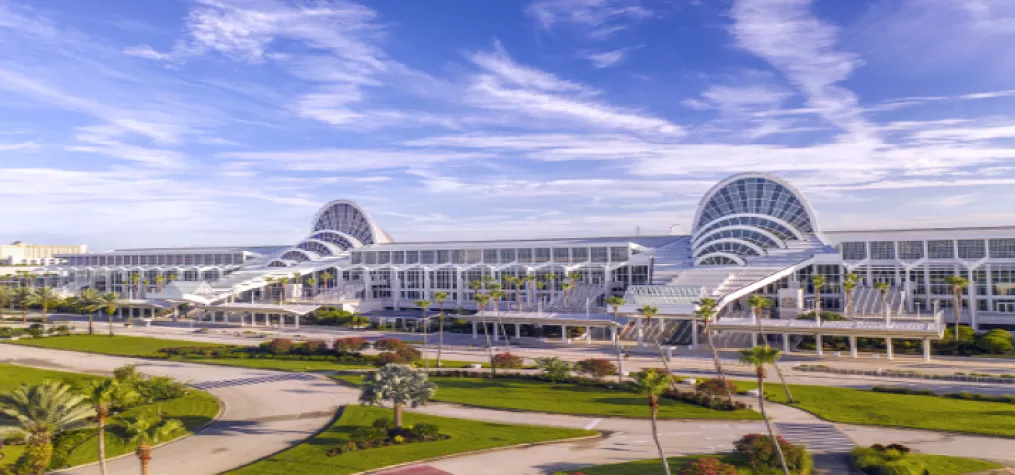Throughout the COVID-19 pandemic, the event industry has seen a complete 180 in operations, with in-person events being forced to move to virtual in response to safety protocols. And now, hybrid events are catching on as a way to provide the best of both worlds. With these changes, event managers are turning to new tools and event software to ease the often quick transition and offer the best overall experience for their audiences.
New practices and technologies can introduce trial-and-error challenges that get in the way of creating the ultimate experience for audiences. Here are three common pitfalls of event management to consider when planning in-person, online or hybrid events.
-
Difficult user experience
For most events, attendee registration is one of the first and most important aspects, as, without attendees, there is no event to take place. What seems like an easy step can make or break an event and, in turn, disrupt the overall user experience.
Many event management teams use their website and online registration forms to share essential event information. They also use these pages to gather crucial attendee information and even receive payment for registration. But a frustrating registration process will deter prospects from signing up. Event teams should ensure their event process from registration experience to post-event feedback is efficient and easy to navigate.
For a great user experience, be sure to display all the details on your landing page. During registration, be sure to request everything needed from the potential attendee. A few key items to include on your landing page and registration form:
- Date, time and location of the event.
- An overview of the event, including any critical information. Speakers, session schedules, driving and parking instructions.
- Waitlisting and special ticket options (virtual vs. in-person options or member/non-member rates, for example).
- Pricing information and accepted payment methods.
- Registration questions that include name, contact information and any interests that could help with follow-up communications journeys.
Using pre-built event page templates can save time, effort and money, ensure the user experience starts on the right track, and eliminate hiring someone to design or code pages and forms.
-
Lack of data collection and accessibility
Data collection and accessibility are essential for events. Registration form data can point attendees toward relevant information and keep them engaged from registration through post-event follow-ups and even later in the customer journey. Teams can ensure open communication with SMS and email reminders, like instant updates for schedule changes. Organizations can easily share upcoming events and surveys.
Without proper data collection and easy access, event organizers miss out on crucial information and interactions with their audience. Plus, the ability to access event data instantaneously within their CRM platform, such as Salesforce, can help event organizers get a 360-degree view of all prospect and customer communications and interactions. This allows them to tailor ongoing communications. For example, suppose a nonprofit asks registrants to select specific interests via a custom question in the registration form. In that case, they can use that data to automatically add them to relevant marketing journeys tied to those interests. Teams benefit by using existing automation integrations or Salesforce processes to enhance the entire customer experience, even outside of events.
Additionally, data collection can help event organizers more efficiently report on event success. It’s becoming increasingly crucial for event teams to prove their return on investment. By obtaining metrics such as attendance numbers, attendees’ industries, job titles and more, event teams can inform their event strategies moving forward. Teams use CRM tools like Salesforce to track critical event metrics. This allows teams to have attendance information recorded directly back into their CRM tool to enable visibility in how their events impact those larger goals.
-
Too much manual post-event work
After the event is over, the last thing event managers want is to spend more time on it. Unfortunately, most event teams spend an immense amount of time and effort sending out follow-up emails, gathering additional data and pulling together reports. Teams save hours by completing post-event tasks with event software that’s built into their existing CRM and automation platforms. Tools devoted to streamlining event management processes allow teams to tie their attendee and event records to leads, contacts, opportunities and more.
Additionally, teams can streamline efforts on recurring events—whether it is every week, every month or every year— by using software with cloning and recurring event features to create similar event pages and experiences. Utilizing existing assets saves hours on manually recreating event pages, key details and setting up any necessary integrations. In addition to this, companies can use existing information, like the last events’ attendee list, or coincide with current marketing efforts to share event news and updates or applicable information with those in the current pipeline.
As the new era of hybrid events continues to evolve, so will the tools, technologies and strategies event organizers use to ensure event success. By recognizing and avoiding these common pitfalls, event teams will be better equipped to plan and execute their next event.
Don’t miss any event-related news: Sign up for our weekly e-newsletter HERE and engage with us on Twitter, Facebook, LinkedIn and Instagram!



Add new comment